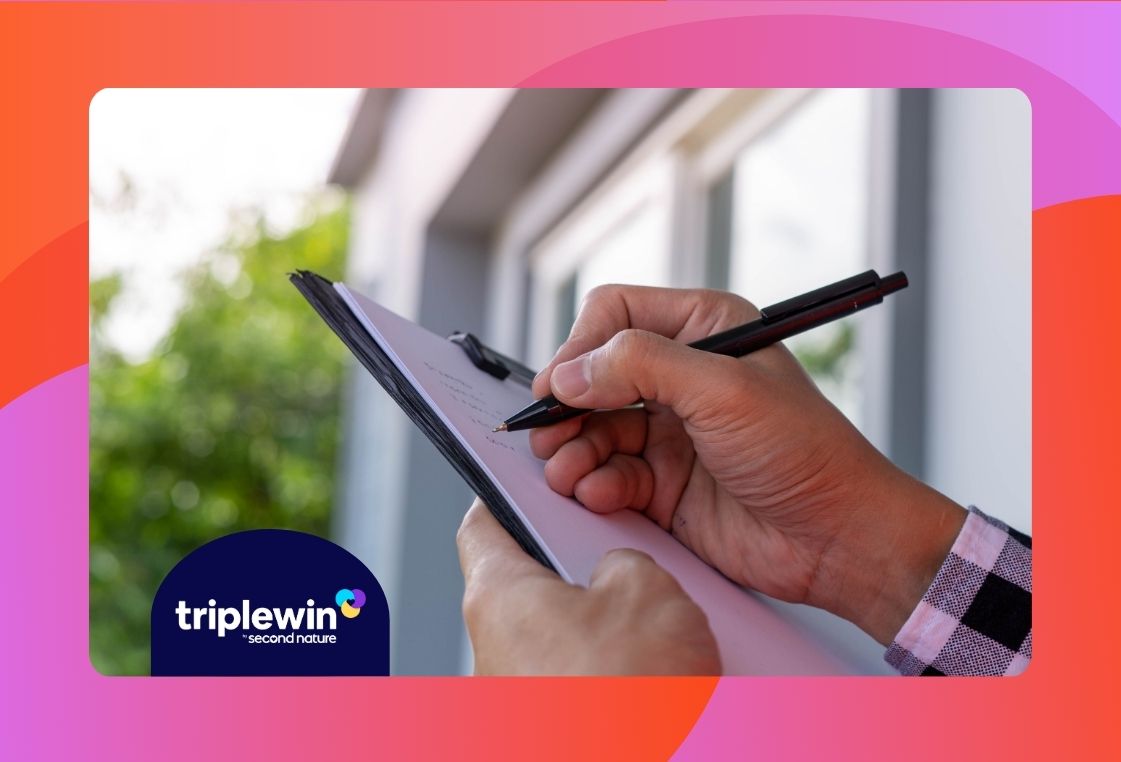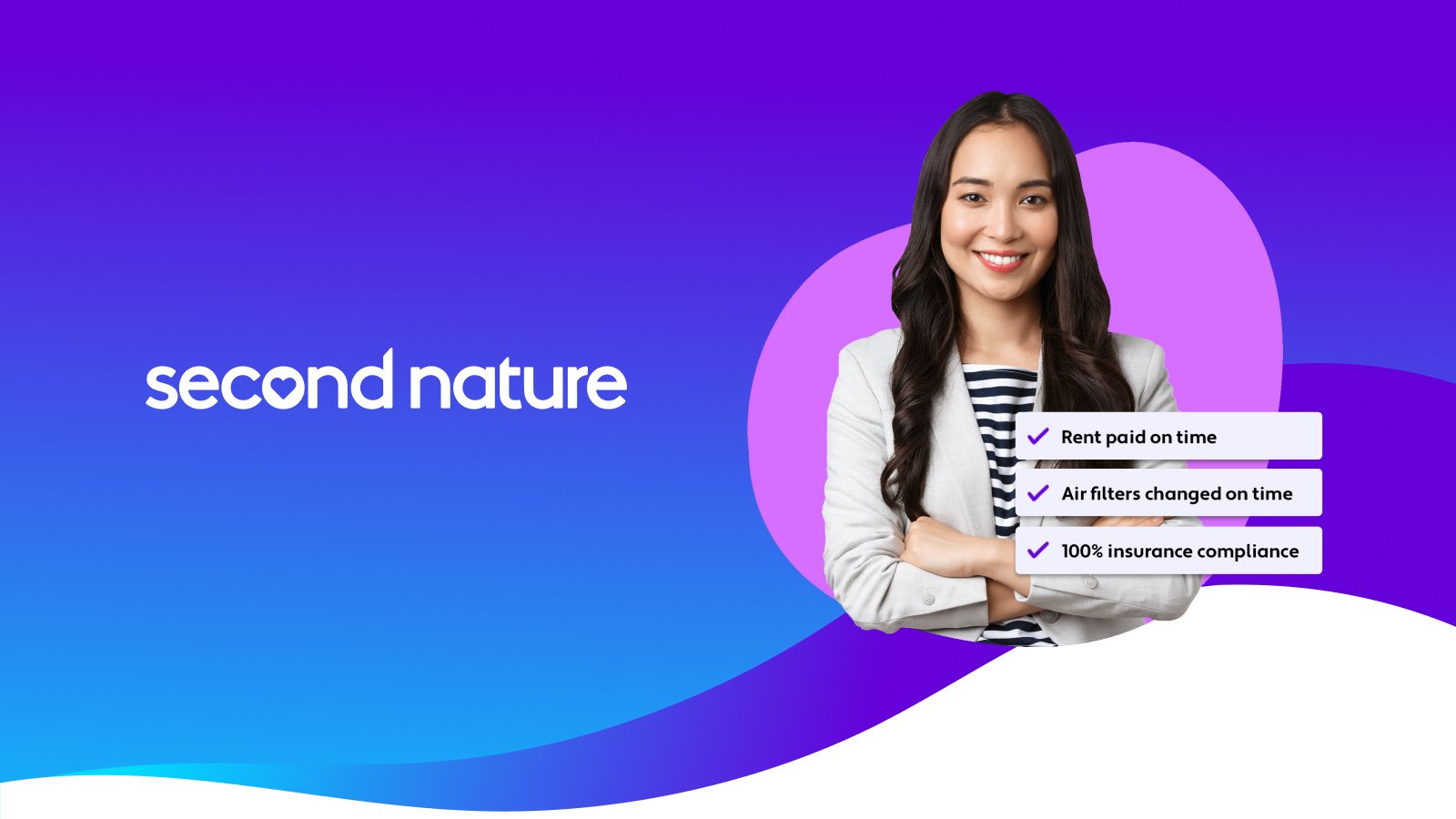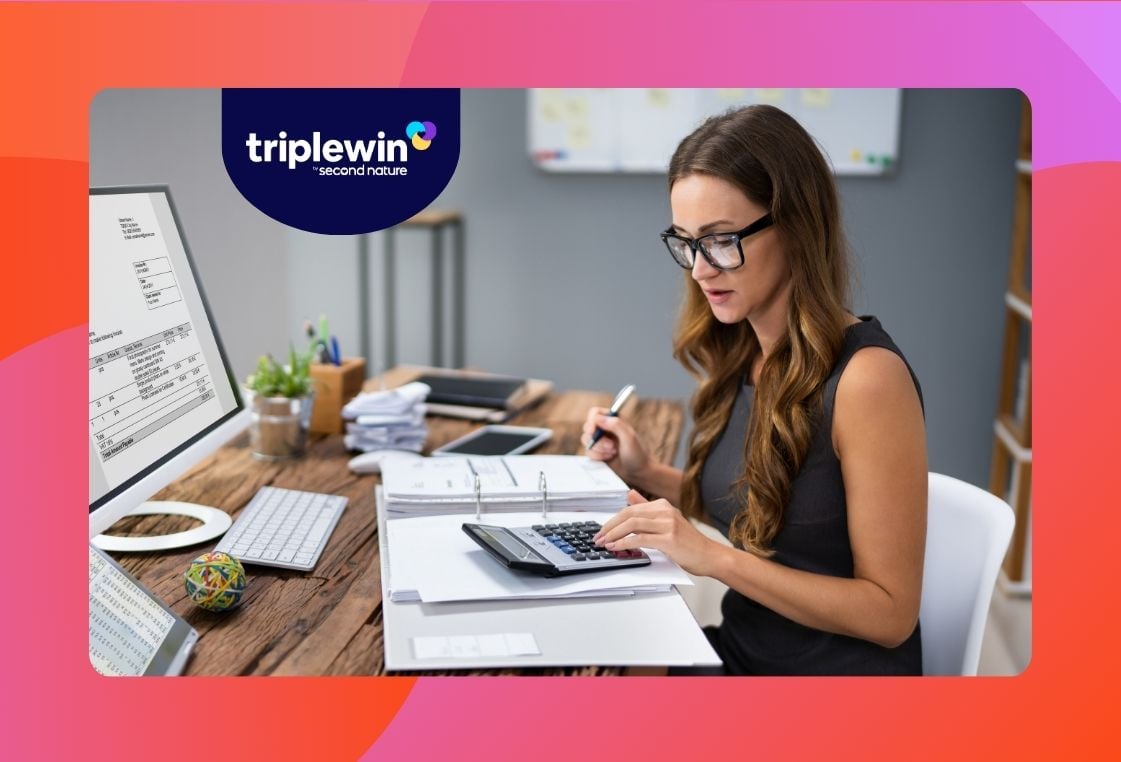From the Second Nature perspective, focusing on a high-quality resident experience is the secret sauce to standing out in a crowded property management industry. That’s because happy residents lead to higher retention rates, more on-time payments, better care for the property, and shorter vacancies. Our property management checklist can help ensure you build that strategy into the DNA of your company from the beginning.
This property management startup checklist is intended to help you orient your company toward a resident focus from the get-go. In the absence of a checklist, it’s all too easy to get caught up in real estate and rental property considerations that do not reflect long-term winning conditions for all stakeholders.
Related: Best Property Management Podcasts
1. Write a property management business plan
In some ways, a property management business plan is a document intended for potential clients and investors. And certainly, it can help you concretize start-up costs and get funding for the business (learn more on what’s needed to get SBA financing).
But in many more important respects, it’s a structured foundation for you to gain insights into what residents are looking for, which in turn will help crystalize the type of clients you want, what types of property you’ll manage, and what kind of property management company you are.
You’ll find a property management business plan template here, but in broad terms, here is a framework of the distinct components:
- Executive summary
- Company overview
- Market analysis (Industry, Customer, and Competitive Analysis)
- Services
- Marketing plan & sales strategy
- Operations management
- Management team
- Financial plan
- Growth opportunities
Each component will lay the foundation for your future resident-focused success.
Related: Property Management Business Plan Template
2. File your property management business
In order to correctly file and pay your business taxes, you’ll need to register your property management business and choose a type of legal entity. This step is important, as it can also impact the protection/exposure of any personal assets, associated paperwork, or even the way in which you raise funds for your business.
Note that it is certainly possible to change your business structure once it's established, but this can be a convoluted and high-stakes process.
For property management businesses, different legal entity options are possible.
Common legal structures include Limited Liability Company (LLC), S-Corporation (S-Corp), and C-Corporation (C-Corp). An LLC offers personal asset protection, while S-Corps and C-Corps provide additional legal safeguards. The choice involves considerations such as pass-through taxation for LLCs (where business income passes directly to the business owner's personal tax return) or potential double taxation for C-Corps, which can be mitigated via accounting measures.
Other options include sole proprietorships as well as partnerships, where taxes and business liabilities are the responsibilities of the individual owners. Once you’ve identified your new business for tax purposes, you can get a free Employer Identification Number from the IRS.
Which type of legal entity you select ultimately depends on your appetite for control, flexibility, and complexity.
Learn more about how to structure your property management company.
3. Setup bank account for your property management business
Opening a business bank account will help you build credit for your own property management company, maintain separation between your personal and business finances, and streamline tax accounting. It may also be required by law, depending on state laws applicable to your business structure.
Some banks offer account features, flat fee or zero fee structures, and services that are particularly beneficial for new businesses and small businesses, so it is worth taking the time to shop around rather than defaulting to the same bank you use for your personal accounts.
4. Setup accounting for your property management Business
With the help of OnSightPROS, we've developed a rental inspection checklist template for single-family rental property management companies. Use this template to build out your checklist.
Not all accounting is equal. Property management accounting deals specifically with the financial management of rental properties. It helps property managers track rental income, manage expenses, handle tenant deposits, and produce financial reports.
Essentially, property management accounting helps you maintain accurate and comprehensive financial records for each property you manage.
Property management accounting consists of two components. The first is corporate accounting, which is similar to the kind of accounting done at any company. The second is trust accounting, which is specific to property management. This kind of accounting relates to the client funds that you hold, including security deposits, rent, and funds intended for property upkeep and repairs.
Managing rental properties can be daunting when it comes to accounting and finance management, but that certainly doesn’t make it a show-stopper. Learn more about property management accounting, as well as accounting software and single family property management software that can make it significantly easier.
5. Obtain required licenses and permits for your property management business
The licenses and permits required for property management businesses vary depending on your location, but common requirements can include a real estate broker license (which often involves an exam-based accreditation as well as potential background checks), a property management license, a leasing agent license, and a business license, as well as any other locally required permits.
6. Secure liability insurance
Liability insurance is important to keep your business running on solid foundations. In fact, it’s essential, as it protects not just you but your investor’s assets and your resident’s safety. At Second Nature, insurance is so important to us that we incorporate an insurance product into our Resident Benefits Package.
General liability insurance for property managers safeguards against potential financial liabilities arising from physical risks. It typically covers expenses related to repairs, replacements, legal fees, and medical bills, and is applicable to both residential and commercial properties.
Coverage can include bodily injury, medical payments, physical damage, reputational harm, and even copyright infringement in relation to marketing efforts.
Note that Second Nature's renter insurance program ensures 100% compliance and liability coverage protecting you, your property investors, and your residents.
7. Hire your team
Hiring the right team has a huge impact on your ability to achieve the business targets you’ve established in your business plan.
Note that “right” doesn’t simply mean “qualified.” That’s because who your employees are is fundamentally more important than what they’ve achieved. After all, you’re setting the stage for them to deliver the best work they’ve ever done in their careers to date.
The hiring process begins by understanding what characteristics you’re looking for. For any given candidate, how do they build the new skills required to address new situations? How do they handle challenges when things get tough? And perhaps most importantly, what is their response to failure?
Insights into these questions will help galvanize a people-focused approach that is truly a value-driven team. After all, at Second Nature, we want to generate value for ourselves, our investors, and our residents—and we want people who buy into that approach.
Get more Second Nature hiring tips on building a people-focused team.
8. Create solid pricing structure and property management contracts
Once you hire a team. establishing a good pricing structure for your business and creating all the legal documents required to run the business should be the priority. That's because the right approach can generate value beyond management fees for property managers, their investors, and their residents, which reflects Second Nature’s “triple win” focus.
General rental property management fees include collecting the month’s rent, following up on arrears, organizing property maintenance and repairs, and keeping up-to-date on legal issues.
Much of the profit in property management comes from driving better value for investors and residents, and pricing for that value. After all, people are willing to pay for better quality experiences in their homes.
Additional fees, which will help drive company growth, should be communicated during the onboarding process and lease agreement. In other words, they are never about hidden markups. They’re about charging for value and driving great habits.
Fees can be applied on the resident side (for instance, paper lease setup fees, lease renewal fees, late fees, or special programs fee) as well as on the investor side for a number of property management services (inspection fees, vendor screening fees, rent protection or eviction fees).
Again, fees help you drive value for both your investors and your residents, and support your business at the same time.
Note that because regulations vary across regions, it may not always be possible to charge fees for certain types of services. That's why it's important to discuss any fee and contract proposals with an attorney before implementing them.
9. Execute the marketing plan set out in your business plan
While it’s true that businesses thrive on referrals and word of mouth, it’s executing on your marketing plan that will help drive more consistent revenue — and help you capitalize on the market research you conducted to assemble your business plan.
As with so many other things, the marketing landscape has changed enormously in just a short time. We’re now living in an era when an active, well managed online presence is critical.
This means that a robust marketing strategy is more than simply managing a social media account (although this too is important). It also includes investing in search engine optimization for your website, executing on content creation and distribution strategies, conducting networking events, and advertising online.
For optimal property management marketing, where work often stays within specific regional areas, it’s also important to maintain a presence in local business listings.
10. Network with fellow property managers and owners to expand your business
We touched on networking in the context of a marketing plan, but for new business owners in particular, networking can be a valuable source for those first few clients.
There’s certainly no shortage of opportunities for establishing your business name, ranging from local vendor fairs to national property management conferences and events with thousands of attendees.
In addition, there are numerous property management associations that provide opportunities for networking, education, and advocacy for property management professionals.
The business and personal development opportunities available through such options present great avenues to expand and optimize your property management business.
11. Write a resident retention strategy - and how you can improve the resident experience
You should be thinking about the resident experience from the very start. After all, in an industry where churn is the norm, an effective retention strategy pays its own way. To be truly effective, however, it’s key to recognize that “resident retention” is not simply a one-dimensional number at the bottom of a spreadsheet.
The “triple win” approach to resident retention asks the question: “How do we create experiences so good that residents never want to leave?”
Answering that question maximizes residential property owner ROI and boosts property manager success. In other words: A win for residents is a win for investors is a win for property managers.
In the same vein, we often hear from professional property managers that a Resident Benefits Package (RBP) is a powerful way to retain residents over the long term. RBPs can help with resident satisfaction and resident retention rates. After all, a proactive, differentiating approach to resident retention means building experiences that people will pay and stay for.
This is a useful lens with which to examine the full property manager/resident journey, from move-in to collecting rent payments to move-out, for opportunities to generate resident retention ideas—and deliver those wins.
12. Create SOPs to handle complaints, disputes, and requests
Once you have the first few properties under your management, it’ll be important to ensure processes and procedures are in place to handle complaints, disputes, excessive maintenance requests, rent collection issues, and tenant problems.
In such cases, rather than automatically assuming the resident is the problem, some property managers approach resident issues as behaviors that can be changed. That’s because the root cause is often addressable and the behavior changeable.
This emphasis on the people element pays off — and lets you focus on how to adjust “bad” behavior through benefits and rewards, rather than just being transactional.
This reframing aside, one of the best ways to deal with complaints and disputes is to avoid them in the first place, which often comes down to non-discriminatory tenant screening processes and background checks.
Other standard operating processes include documenting all incidents and updates thoroughly, calling law enforcement in the case of illegal activity, implementing eviction processes if necessary, and staying current and compliant with local laws and regulations.
13. Create and execute a strategy to improve the resident experience
Once again, improving the resident experience goes a long way in retaining the residents and creating ancillary revenue streams.
From the get-go, you can actively ensure great first impressions with services such as move-in concierges or coordinators. After all, a resident who's had a positive move-in experience is a happier one. Happier residents stay longer, pay on time, take care of the property, and make positive recommendations.
Throughout the residential journey, other strategies for improving the resident experience include pest control for property management, credit reporting, and resident rewards.
Above all, one of the cornerstones of a great resident experience is responsiveness. This responsiveness is a two-way street! It covers improved maintenance service and response times, as well as opportunities for residents to provide feedback through resident surveys.
By setting up this kind of feedback loop, you demonstrate to your residents that their voices matter, which instills a sense of ownership and care that often lead to better property care and longer tenancies.
Property management startup checklist
It’s famously said that property managers are in the business of helping many different people with many different things. And sometimes, this can feel like a lot to tackle, especially at the startup phase. That’s why we’ve assembled this property management startup checklist to help you begin:
- Write a Property Management Business Plan
- File Your Property Management Business
- Set Up a Bank Account for Your Property Management Business
- Set Up Accounting for Your Property Management Business
- Obtain Required Licenses and Permits for Your Property Management Business
- Secure Liability Insurance
- Obtain Required Licenses and Permits for Your Property Management Business
- Hire Your Team
- Create Solid Pricing Structure and Property Management Contracts
- Execute the Marketing Plan Set Out in Your Business Plan
- Network with Fellow Property Managers and Owners to Expand Your Business
- Write a Resident Retention Strategy — and How You Can Improve the Resident Experience
- Create SOPs to Handle Complaints, Disputes, and Requests
- Create and Execute a Strategy to Improve the Resident Experience
How Second Nature helps run a property management company profitably
At Second Nature, we focus on creating “triple win” experiences for residents, property managers, and investors. This helps property management companies go beyond transactional basics and create new, professional, and holistic experiences that generate growth all around.
We didn’t invent this stuff, and we’re certainly not rowing against the tide! Companies like Google, Uber, and Amazon have already changed how consumers think. A convenient experience is no longer a luxury—it’s an expectation. Accordingly, for property management profitability and growth, experience is the winning strategy.
That’s the insight that led us to create the Second Nature resident benefits package (RBP). It’s a foundational tool to create unforgettable resident experiences and keep your property management company on a growth path.






